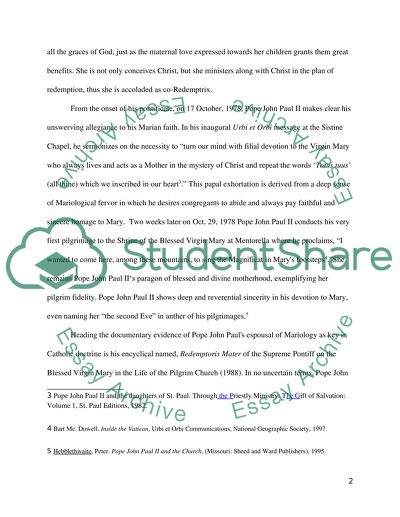Cite this document
(“Pope John Paul II and the Dogma of Mariology Essay”, n.d.)
Pope John Paul II and the Dogma of Mariology Essay. Retrieved from https://studentshare.org/religion-and-theology/1440513-mariology-of-john-paul-ii
Pope John Paul II and the Dogma of Mariology Essay. Retrieved from https://studentshare.org/religion-and-theology/1440513-mariology-of-john-paul-ii
(Pope John Paul II and the Dogma of Mariology Essay)
Pope John Paul II and the Dogma of Mariology Essay. https://studentshare.org/religion-and-theology/1440513-mariology-of-john-paul-ii.
Pope John Paul II and the Dogma of Mariology Essay. https://studentshare.org/religion-and-theology/1440513-mariology-of-john-paul-ii.
“Pope John Paul II and the Dogma of Mariology Essay”, n.d. https://studentshare.org/religion-and-theology/1440513-mariology-of-john-paul-ii.


